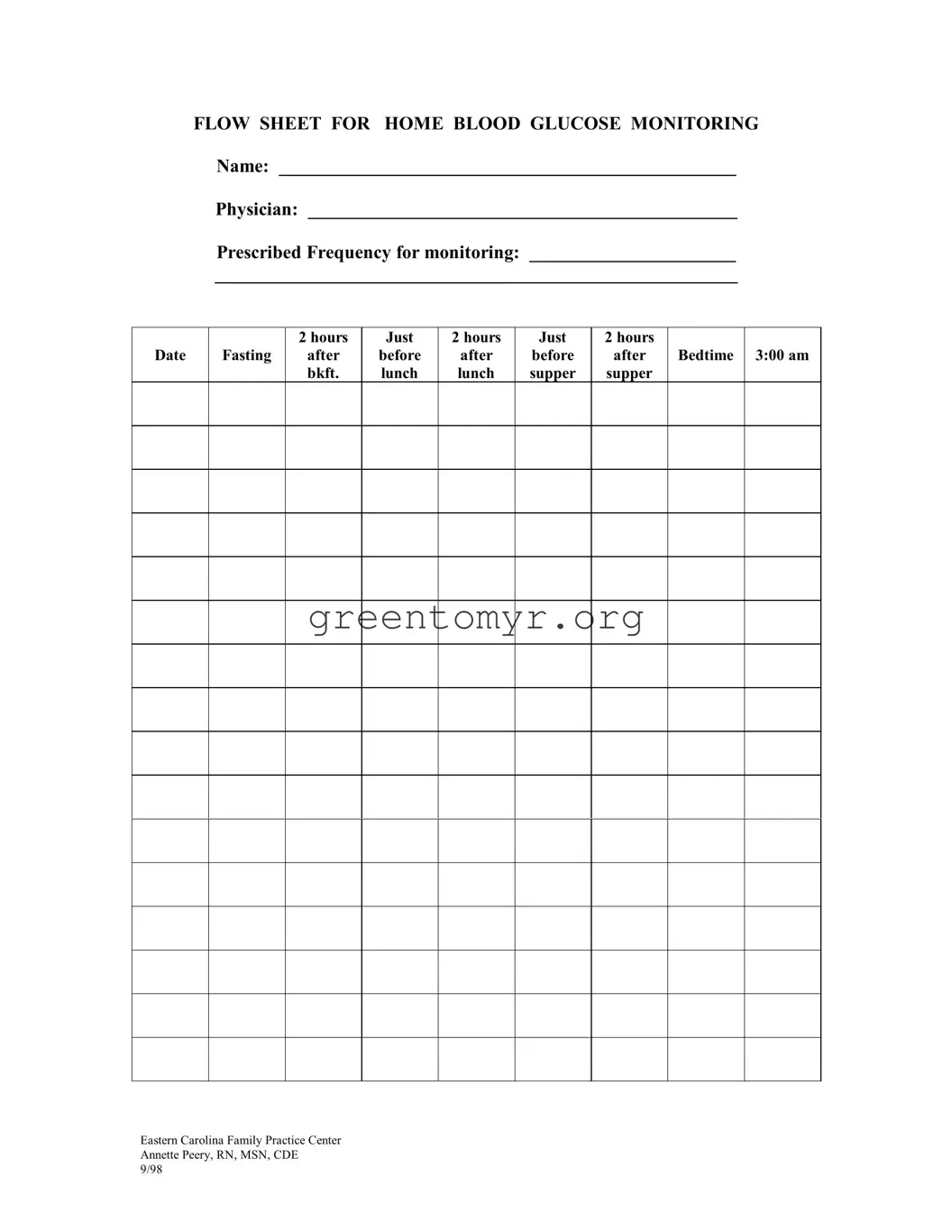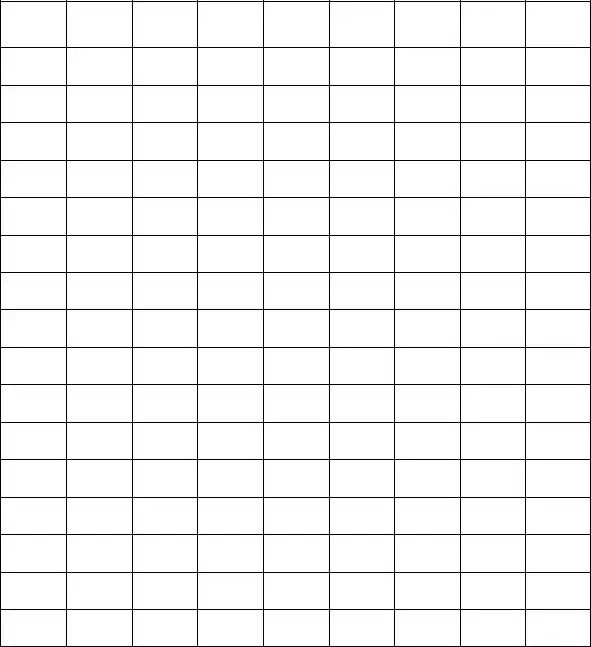The Blood Glucose Monitoring form serves as a tool for individuals managing diabetes. It helps track blood glucose levels at specified times throughout the day, allowing for better control and understanding of how various factors affect blood sugar levels.
This form is intended for anyone diagnosed with diabetes who is monitoring their blood glucose levels. It can also be beneficial for individuals working with healthcare providers to manage their condition effectively.
You will need to provide your name, the name of your physician, and the prescribed frequency for monitoring your blood glucose levels. This ensures that the monitoring aligns with your tailored care plan.
How often should I monitor my blood glucose levels?
The prescribed frequency for monitoring can vary by individual, so it's essential to follow your physician's recommendations. Common times for testing typically include:
-
Fasting
-
2 hours after breakfast
-
Just before lunch
-
2 hours after lunch
-
Just before supper
-
2 hours after supper
-
Bedtime
-
3:00 AM
How should I record my results?
You should enter your blood glucose readings directly on the form after testing. Consistent recording helps you and your healthcare providers track trends and adjust treatment as needed.
What should I do if my readings are consistently high or low?
If your readings are consistently outside the target range, it's crucial to contact your healthcare provider. They can help you understand what adjustments might be necessary to your medication, diet, or activity level.
How often should I update my physician about my blood glucose levels?
Yes, family members, caregivers, or healthcare professionals can assist you in completing the form. Make sure the person helping you understands your testing schedule and how to record the results accurately.
Where can I get additional support for managing my diabetes?
You can reach out to your healthcare provider for resources. Additionally, diabetes education programs, support groups, and online communities offer valuable information and support to help manage diabetes effectively.

